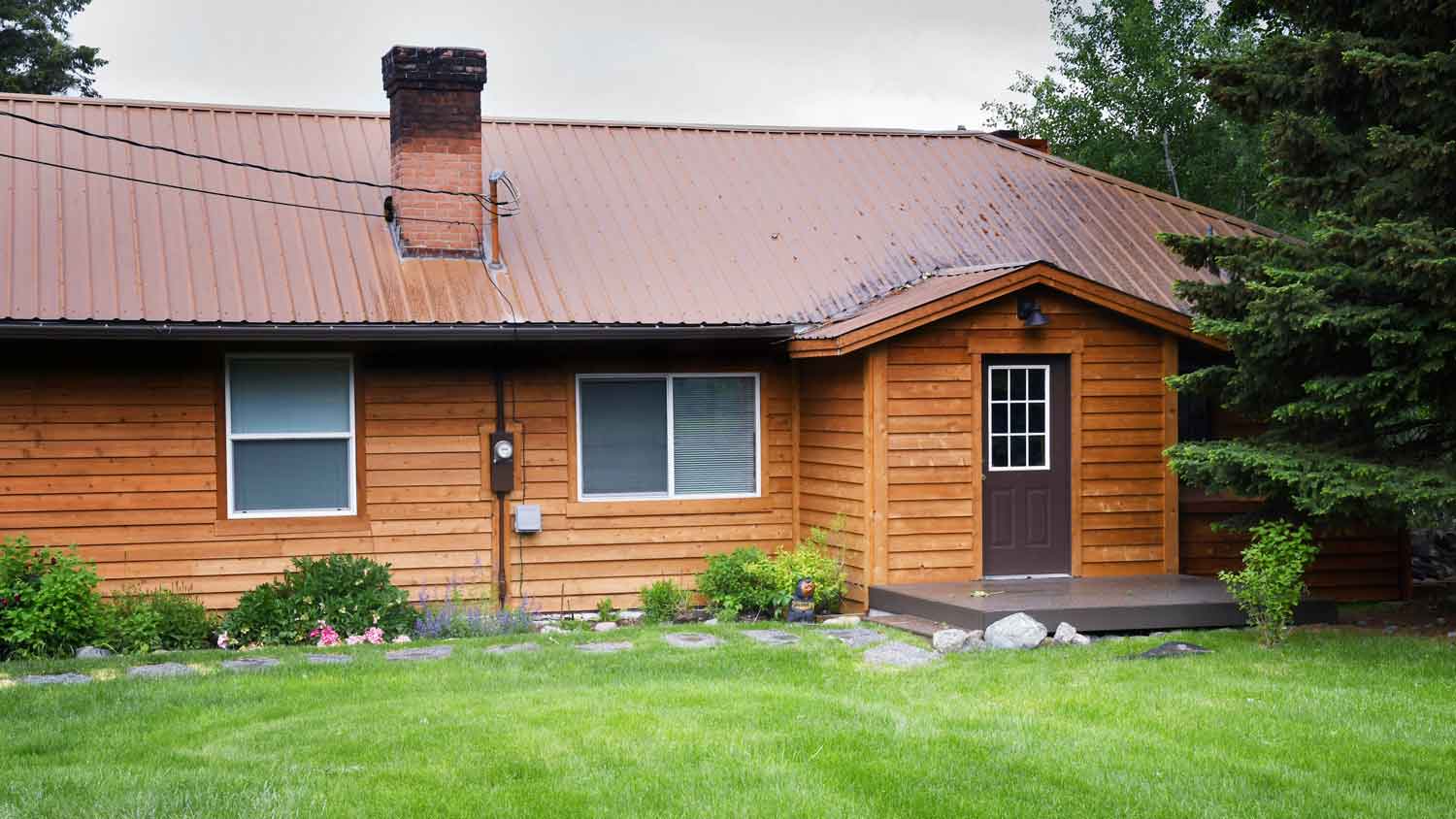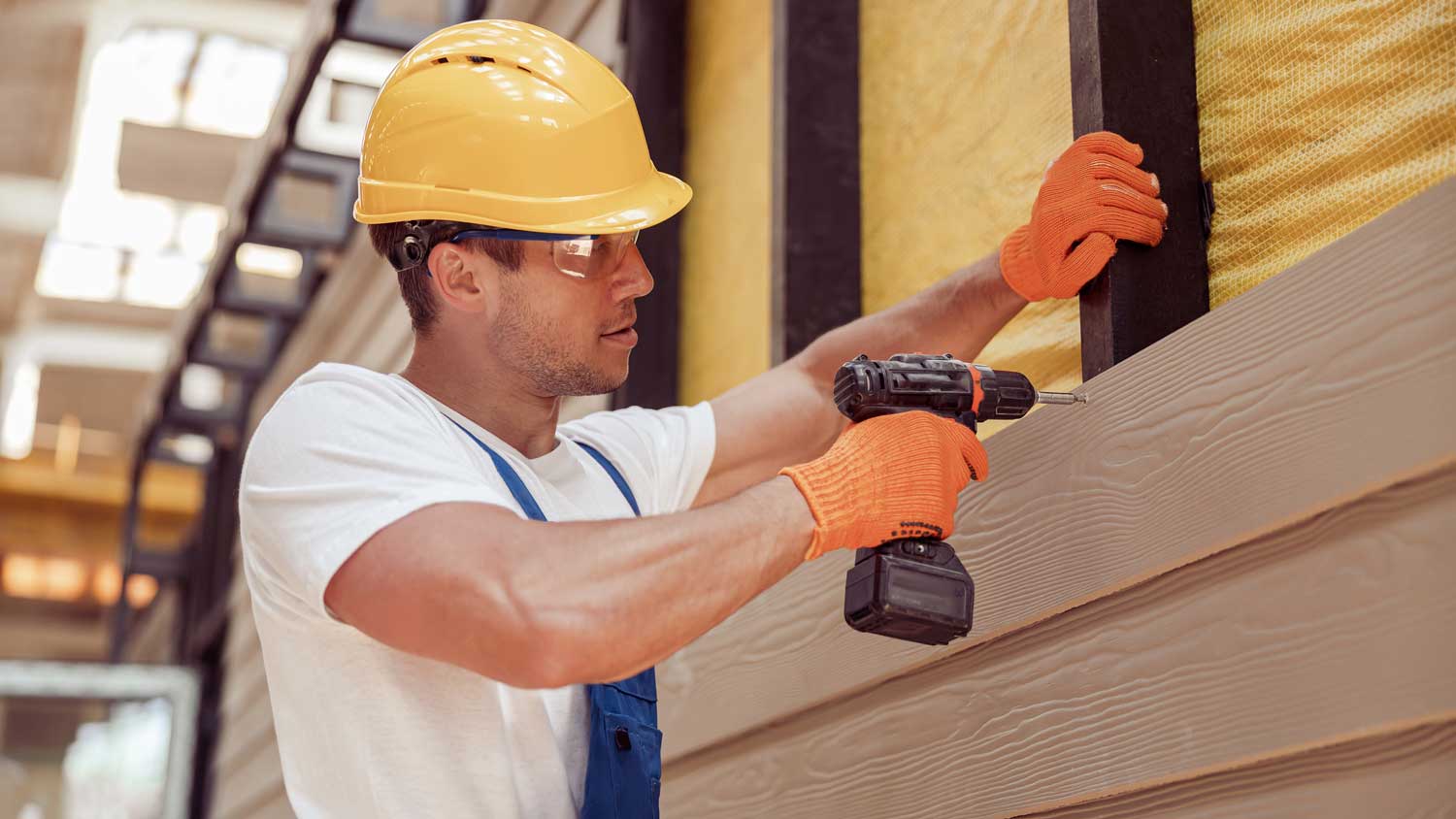Wood Siding Pros and Cons: Should You Go With Wood?
Maintenance is a must with multifaceted wood siding


Wood siding is versatile, with many styles and types to choose from.
It’s easy to paint or stain wood siding if you want to do a mini exterior makeover.
Of all the siding types, wood is the most environmentally friendly.
Don’t go for wood siding if you’re not ready for regular upkeep.
Wood isn’t the most wallet-friendly siding selection.
If you’re looking to upgrade your home’s exterior, you may be weighing up wood siding pros and cons. Replacing your old siding can make your home more weather-tight and boost your home’s curb appeal. If you like the idea of timeless timber, read on to understand whether wood is the way for this big-budget makeover.
Pros of Wood Siding
It’s no wonder wood siding never seems to go out of fashion. Here are some reasons you see it on so many American homes.
Improves Resale Value
Freshening up the facade by replacing siding is a high return on investment project, as it boosts your home’s resale value. According to a report by Remodeling Magazine, upgrading your siding can recoup about 76% of the project value. Because of its timeless appeal, wood siding is one of the styles that will appeal the most.
A Slew of Styles
Of all the siding materials, wood is the most wide-ranging. Yes, vinyl siding comes in many colors and shapes too, but wood has a greater range of styles, plank sizes, thicknesses, and subtle differences in look because of grain and texture.
When it comes to wood cladding, you can choose from lap, drop channel, tongue and groove, board and batten, shake, and shingle. All this variety in vertical and horizontal designs means there’s one to fit with any architecture.
Many Materials

You’ve also got plenty of choices with the type of wood you select. Which you decide on depends on your budget, climate, and aesthetic. Just some options you have include:
Pine: A popular, budget-friendly softwood that’s available in a wide range of shades and grains. But it isn’t rot or insect repellent and needs particularly regular maintenance and treatment.
Redwood: This tough type is more rot-resistant and insect-repellant than many species and absorbs stain finishes well. But it’s pricey and not so widely available outside western North America.
Cedar: This is a good choice in damp regions where you want to minimize swelling, warping, and splitting.
Cypress: Looking for a lightweight but durable siding option? This is the species to go for.
Fir: Handy if you want long siding boards, this shares many of the same qualities as pine.
Customizable
Because you can easily paint or stain wood, it's perfect if you want to make changes further down the line without too much cost or hassle. A quick coat of paint can completely transform the look of your house. You don’t get this easy level of customizable options with hard-to-paint vinyl. The cost to paint the exterior of a house with wood siding averages between $700 and $3,000.
If you have the right softwood, like cedar, you can create Shou Sugi Ban siding, using an on-trend wood-burning technique. The carbonized wood finish naturally preserves the siding, highlights the natural grains, and you’ll have a striking dark gray to black finish on your home.
Environmentally-Friendly
If being eco-conscious is a foremost factor, you won’t find a better siding than wood. This biodegradable, recyclable, renewable material doesn’t churn out harmful pollutants during the manufacturing process the way some vinyl siding does. Its production doesn’t use the same amount of energy the likes of metal and vinyl do, either.
Can Handle Extremes of Temperatures
While high humidity levels aren't the friend of untreated softwood siding, wood won’t crack like vinyl if frigid temperatures are part of your winter weather. It also won’t soften and melt if scorching heat is an issue.
Cons of Wood Siding
Wood won’t be for every homeowner. Knowing the drawbacks of this siding material helps you decide if it’s what you want.
Maintenance

One of the headmost hindrances of wood siding is how much maintenance it needs to keep it in tip-top condition. Moisture and insects can permeate it without regular staining or painting every few years, leading to structural and aesthetic issues. Your wood siding will last longer with the right care and climate, but if you let maintenance slide, the signs of siding problems and costly replacement could be on the cards in less than 10 years rather than in 20 to 40.
If you don’t want the hassle or cost of regular treatments, opt for virtually maintenance-free metal or the easier-to-upkeep fiber cement or vinyl.
Durability
Although wood siding can do well with the right maintenance, it isn’t a fan of high humidity, and it can't take an onslaught from pesky insects (like termites) or vermin the way other materials can.
Consider metal, brick, or fiber cement siding if you're looking for extra durable options. You’ll usually pay more for these, but they’re an excellent long-term investment.
If you’re on a budget, vinyl might be the way to go provided you’re not in a region that suffers from temperature extremes.
Cost
When it comes to the cost of replacing your siding, wood isn’t the most wallet-friendly option. The cost of vinyl siding is lower than wood, at an average of $4 per square foot—and it’s easy to install.
However, wood siding isn’t the most expensive option (think stucco and stone veneer), typically ranging between $5 and $10 per square foot. And the type of wood you pick makes a big difference. Softwood pine, for example, is much less expensive than the likes of redwood, although it won’t last as long.
Installation

Vinyl siding beats most other materials in terms of installation. It’s easy to cut to shape, lightweight, locks into place simply without nail fixings and doesn’t need sanding, priming, painting, or staining. That makes it one of the easiest options to DIY, and the labor charges for local siding contractors tend to be less than wood siding installation.
While installation of wood siding, which needs nailing in, is trickier than vinyl installation, it still isn’t as challenging or pricey as the installation process for the likes of brick or stone.
If you’re an experienced weekend warrior, you might still be able to save by tackling wood siding installation yourself, and at least it doesn’t cause the same challenges as, say, unwieldy fiber cement siding.
Fire Ratings
Combustible wood siding isn't the best bet if you live in a region at risk from wildfires. It’s possible to treat the wood with flame-retardant chemicals, but opting for fire-resistant materials, like PVC vinyl siding, fiber cement, or metal, is the safer solution.




















